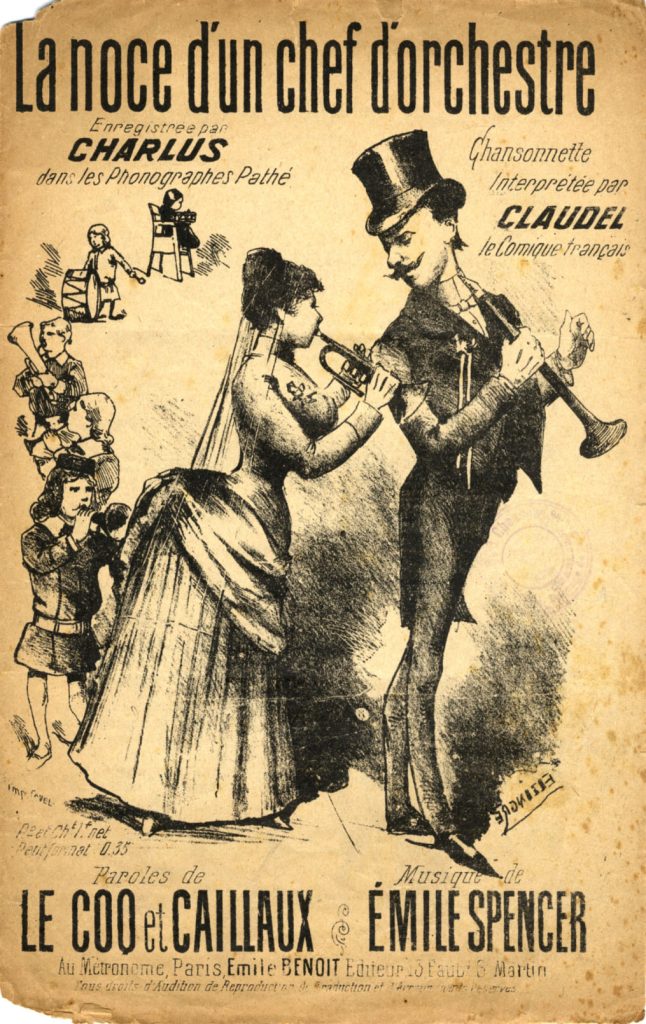
According to the singer Charlus (1860-1951) he recorded no less than 80.000 songs which earned him the nickname ‘slave of the phonograph’. Charlus (pronounced Charlusse) was a performer who’s versatility led him to succeed in Paris in many genres, largely between 1888 and 1914. Towards the end of his long career he was a director at Pathé in Paris, and later in Marseille, responsible for the recordings of the caf’ conc’ repertoire. Today, we get an impression of his artistic talent by this recording of the ditty ‘La noce d’un chef d’orchestre‘ (The wedding of a bandmaster).
Nosing about Charlus’ career, I learned a surprising —and hard to believe— fact about the first commercial recordings at the end of the 19th century. But first let me tell you a little about the early phonographs to better understand the challenges for recording artists.
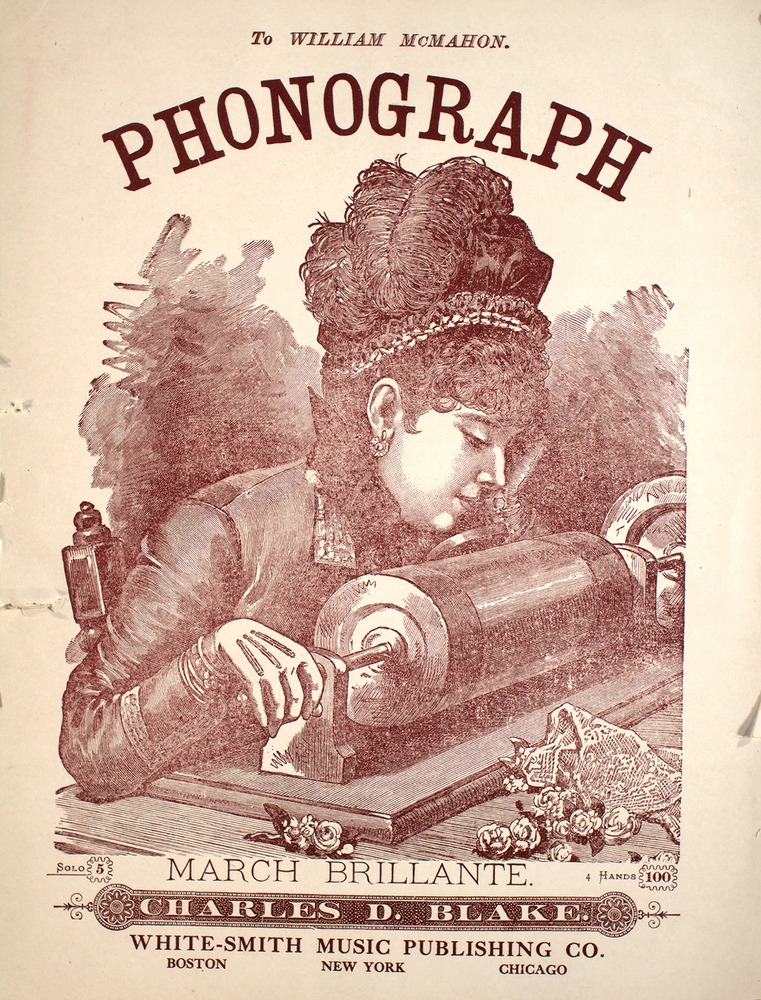
The first phonographs (1877), courtesy of Edison, recorded the sound on tinfoil wrapped around a hollow hand-cranked cylinder. Tinfoil, the predecessor of household aluminium foil, was soft enough for sound waves to be etched into its surface, yet hard enough to be traced over with a needle to play back the sounds. A cylinder could record sound for up to two minutes. But after a few playbacks the foil either had ripped or the sound quickly deteriorated. The cover above shows us the French operatic soprano Marie Roze singing Home Sweet Home into such a phonograph at Steinway Hall, New York in 1878. So for the first time, the famous soprano could sit in the audience and hear herself sing.
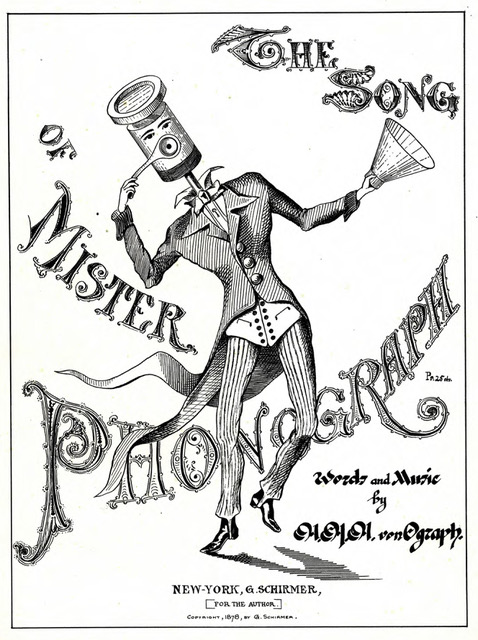
People, eager to see and hear the magical talking machine, were flocking to public exhibitions held throughout America. These exhibitions got promoted with The Song Of Mister Phonograph: “It is just long enough to be sung into one sheet of tinfoil and is admirably reproduced”. In Paris the phonograph was introduced at the International Exposition in 1878.
It took Alexander Graham Bell and his colleagues seven years to improve the crude sound recording of Edison’s first phonograph. They introduced wax as the recording medium, and used engraving rather than indenting tinfoil. Edison then further refined the recording technique by replacing wax-coated cardboard tubes by all-wax cylinders. From 1889 on professionally made pre-recorded wax cylinders were commercialised. By stripping away the top layer of wax, cylinders could be reused and phonographs were even sold with an attachment that let customers record their own audio at home.
Now back to Charlus. He was one of the first artists in Paris to make recordings on cylinders from the mid-1890s on. What I didn’t know previously is that each cylinder had to be individually recorded, one by one! Moreover, the machines didn’t pick up sound very well so one had to shout into them. All in all an exhausting experience.

Around 1900 in the studios of Pathé Frères, Charlus recorded Le Muet mélomane of which 500 cylinders were made. This meant for Charlus that he had to repeat the same song 500 times!
Charlus recorded an average of 80 songs a day, 40 in the morning, 40 in the afternoon. Some time later Pathé Frères used three cylinders at the same time. But as by then sales had increased, the artists had to work even harder. Thus Charlus had to interpret the song L’ Aventure espagnole more than 1.500 times in order to create 5.000 cylinders. No wonder his nickname was ‘slave of the phonograph’.
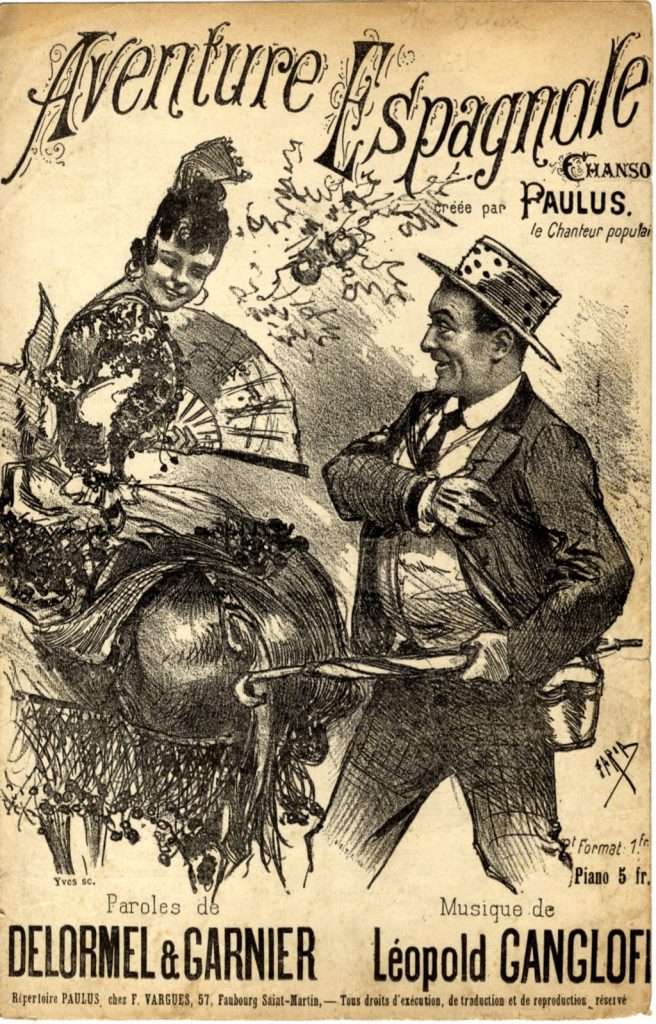
Charlus in ‘Lecture Pour Tous‘, January 1934: “I sang duets with Mrs. Rollini, who had an excellent voice. You would have laughed at our posture while recording these duets. In order to stay close to the horn which was hardly more than 25 centimetres in diameter, we had to hug each other; she held me by the neck and I held her by the waist! We couldn’t move. When there was a need to imitate the sound of a kiss, ouch! .. I stuck it on her cheek: it was a natural kiss.”
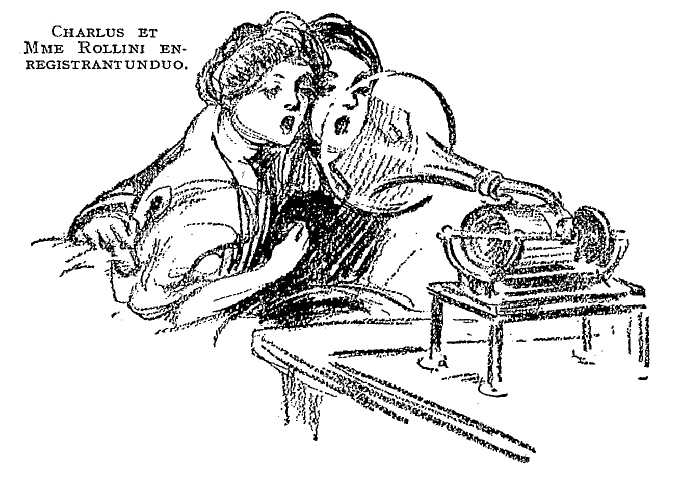
As a tribute to the pioneering work of Charlus more than 120 years ago, we gladly bring here a performance by Van Morrison, the king of endless repetition.

Thank you so much for naming the soprano, Marie Roze, on the title page for the sheet music ‘Phonograph’. I could not have found that information anywhere. The following piece you posted, ‘The Song of Mister Phonograph’, with words and music by H.H.H. von Ograph, is interesting. This is almost certainly Henry Holden Huss, a prominent classical music composer who was fond of pseudonyms. A copy of this music exists with his image pasted on the cover. Cheers, Kevin (FirstEpoch).